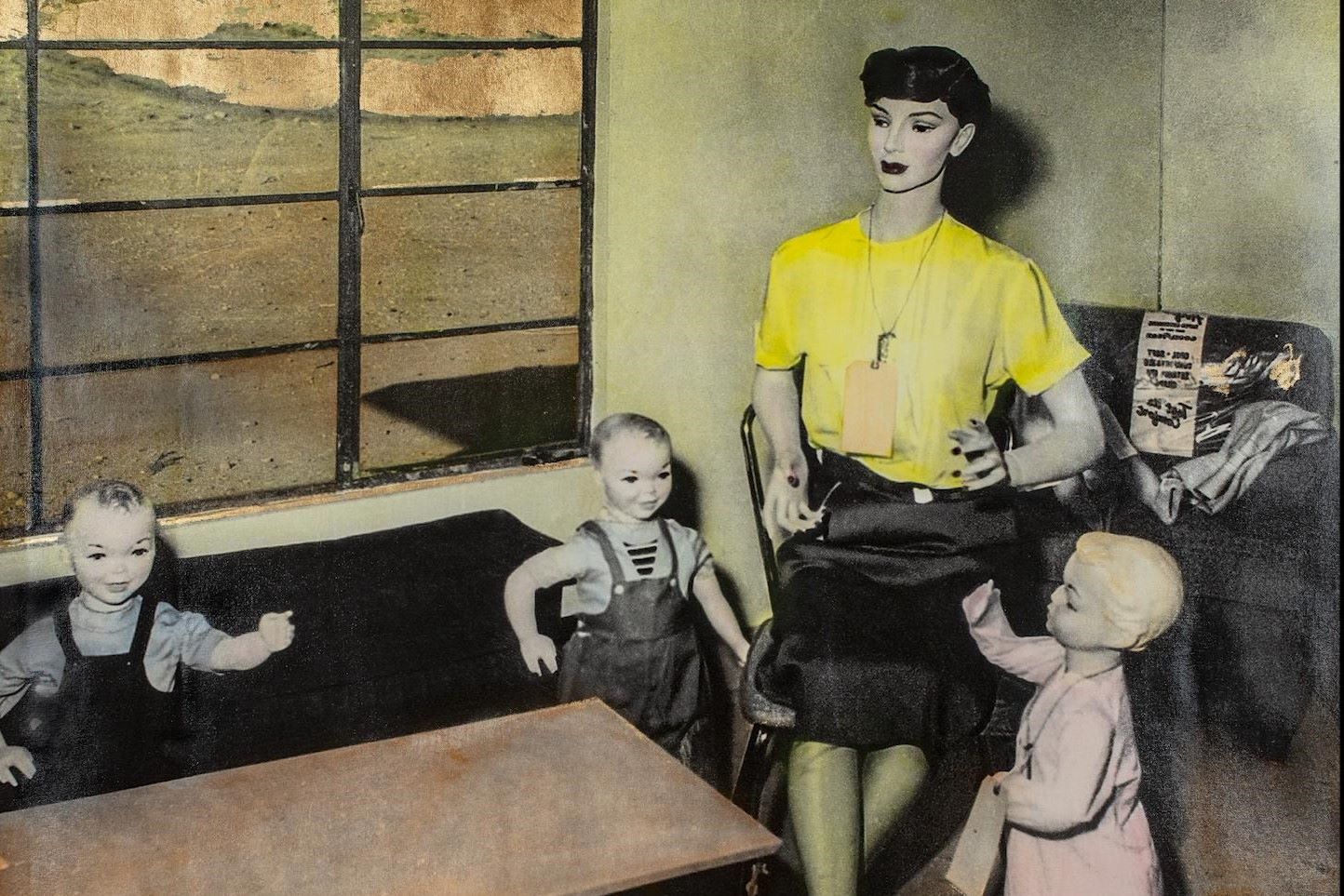
Operation Doorstep was a significant event during the Cold War era, conducted to understand the impact of nuclear explosions on everyday life. This operation involved detonating nuclear bombs near model homes and cars to simulate a suburban neighborhood's response to such an explosion. Why was Operation Doorstep important? It provided crucial data on the effects of nuclear blasts on civilian structures, which helped shape civil defense strategies. What can we learn from it today? The findings still offer valuable insights into disaster preparedness and the resilience of modern infrastructure. Let's dive into 35 intriguing facts about this pivotal moment in history, shedding light on its lasting impact.
Key Takeaways:
- Operation Doorstep, a Cold War test, showed how nuclear blasts affect homes, cars, and people. It influenced building codes and civil defense strategies, raising awareness of nuclear dangers in everyday life.
- The tests, Annie and Nancy, highlighted the devastating power of nuclear weapons, influencing future nuclear tests and shaping Cold War history. The iconic mannequins symbolize efforts to protect civilians.
Operation Doorstep: A Glimpse into History
Operation Doorstep was a fascinating part of the Cold War era, shedding light on the potential impacts of nuclear warfare on everyday life. Conducted in the 1950s, this operation aimed to understand how nuclear explosions would affect homes, vehicles, and people. Here are some intriguing facts about this historical event.
The Basics of Operation Doorstep
Before diving into the specifics, let's cover some foundational details about Operation Doorstep.
-
Operation Doorstep was part of a larger series of tests known as Operation Upshot-Knothole. These tests were conducted by the United States in 1953 at the Nevada Test Site.
-
The primary goal was to study the effects of nuclear blasts on civilian structures and vehicles. This included houses, cars, and even mannequins dressed in typical 1950s attire.
-
Two nuclear devices were detonated during Operation Doorstep. These tests were named Annie and Nancy, with Annie being the more well-known of the two.
The Test Structures and Their Significance
The structures used in Operation Doorstep were meticulously chosen to represent typical American homes and vehicles of the time.
-
Two types of houses were built for the tests. One was a wood-frame house, and the other was a brick house, both common in the 1950s.
-
The houses were fully furnished. They included furniture, appliances, and even canned goods to simulate real living conditions.
-
Mannequins were placed inside and outside the houses. These mannequins were dressed in everyday clothing to study the potential impact on human beings.
-
Vehicles were parked near the houses. These included cars and trucks to observe how they would fare in a nuclear explosion.
The Nuclear Detonations
The detonations themselves were carefully planned and executed to gather as much data as possible.
-
The first test, Annie, was conducted on March 17, 1953. It had a yield of 16 kilotons, similar to the bomb dropped on Hiroshima.
-
The second test, Nancy, took place on March 24, 1953. This test had a lower yield of 24 kilotons.
-
High-speed cameras were used to capture the explosions. These cameras provided valuable footage for analyzing the effects of the blasts.
The Impact on Structures
The results of the tests provided crucial insights into the resilience of different types of structures.
-
The wood-frame house was severely damaged. It was located closer to the blast and suffered extensive destruction.
-
The brick house fared slightly better. Although it was also damaged, it remained more intact compared to the wood-frame house.
-
Windows shattered in both houses. The intense pressure from the blast caused all windows to break, sending glass shards flying.
-
Furniture inside the houses was thrown around. The force of the explosion caused significant displacement of interior items.
The Impact on Vehicles
Vehicles were also a critical part of the study, as they represented a common aspect of daily life.
-
Cars parked near the blast were heavily damaged. The intense heat and pressure caused significant destruction to the vehicles.
-
Some vehicles were flipped over. The force of the explosion was strong enough to overturn cars and trucks.
-
Tires melted from the heat. The extreme temperatures caused the rubber tires to melt and deform.
The Impact on Mannequins
Mannequins played a crucial role in understanding the potential human impact of a nuclear explosion.
-
Mannequins inside the houses were knocked over. The blast force caused them to fall and sustain damage.
-
Mannequins outside the houses were more severely affected. Those closer to the explosion experienced greater damage, simulating potential human casualties.
-
Clothing on the mannequins was scorched. The intense heat from the blast caused significant burning and charring of the fabric.
The Aftermath and Analysis
The data collected from Operation Doorstep was invaluable for future planning and civil defense strategies.
-
The tests highlighted the importance of building materials. Brick structures were shown to be more resilient than wood-frame houses.
-
Civil defense strategies were updated based on the findings. The results influenced recommendations for building shelters and protecting civilians.
-
The footage from the tests was used for educational purposes. It helped inform the public about the potential dangers of nuclear warfare.
-
Operation Doorstep contributed to the development of better building codes. The insights gained led to improvements in construction standards to enhance safety.
The Legacy of Operation Doorstep
Operation Doorstep left a lasting impact on both military and civilian approaches to nuclear preparedness.
-
The tests underscored the devastating power of nuclear weapons. They served as a stark reminder of the potential consequences of nuclear conflict.
-
Operation Doorstep influenced future nuclear tests. The data collected helped shape subsequent experiments and studies.
-
The operation remains a significant part of Cold War history. It represents a critical moment in the ongoing efforts to understand and mitigate the effects of nuclear explosions.
-
The Nevada Test Site became a key location for nuclear testing. Operation Doorstep was one of many tests conducted at this site over the years.
-
Public awareness of nuclear dangers increased. The operation helped raise awareness about the potential impacts of nuclear warfare on everyday life.
-
Operation Doorstep is still studied by historians and scientists. The data and footage continue to provide valuable insights for research and education.
Interesting Tidbits
Here are some lesser-known facts that add more depth to the story of Operation Doorstep.
-
The tests were part of a larger effort to understand nuclear fallout. Operation Doorstep was one piece of a broader puzzle in studying the effects of nuclear explosions.
-
Some of the footage from the tests has been declassified. This allows the public to view and learn from the historical events.
-
The mannequins used in the tests have become iconic. They symbolize the human aspect of nuclear testing and the efforts to protect civilians.
-
Operation Doorstep was one of the first tests to focus on civilian structures. Previous tests had primarily focused on military targets and equipment.
-
The operation helped pave the way for future civil defense initiatives. The insights gained were instrumental in developing strategies to protect the public in the event of a nuclear attack.
The Lasting Impact of Operation Doorstep
Operation Doorstep left a significant mark on history. This 1953 experiment, part of the larger Upshot-Knothole series, provided crucial insights into nuclear blast effects on homes and shelters. The test involved placing mannequins, cars, and houses near a nuclear explosion to study the aftermath. Findings from this operation helped shape civil defense strategies during the Cold War.
The data gathered influenced building codes and emergency preparedness plans, aiming to protect civilians from potential nuclear attacks. While the Cold War has ended, the lessons from Operation Doorstep remain relevant. They remind us of the importance of preparedness and the ongoing need for safety measures in an unpredictable world.
Understanding this historical event helps appreciate the efforts made to safeguard communities. Operation Doorstep's legacy continues to inform and educate, ensuring that the knowledge gained is not forgotten.
Frequently Asked Questions
Was this page helpful?
Our commitment to delivering trustworthy and engaging content is at the heart of what we do. Each fact on our site is contributed by real users like you, bringing a wealth of diverse insights and information. To ensure the highest standards of accuracy and reliability, our dedicated editors meticulously review each submission. This process guarantees that the facts we share are not only fascinating but also credible. Trust in our commitment to quality and authenticity as you explore and learn with us.


